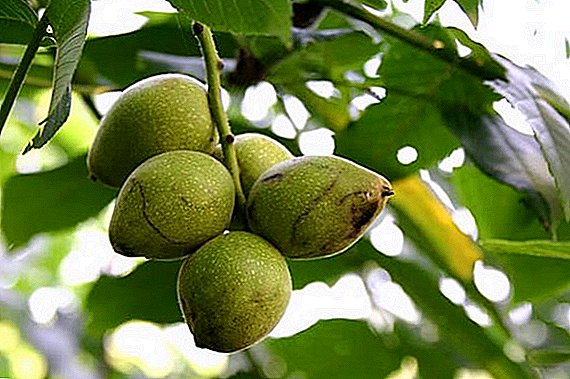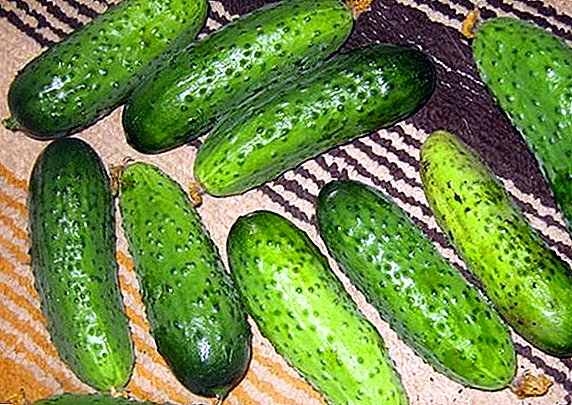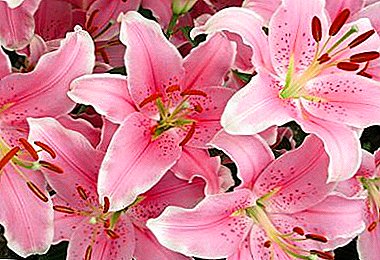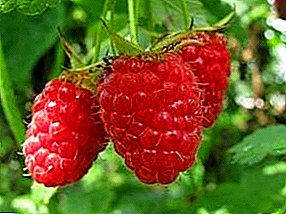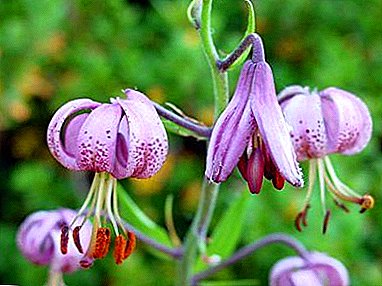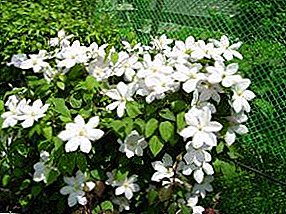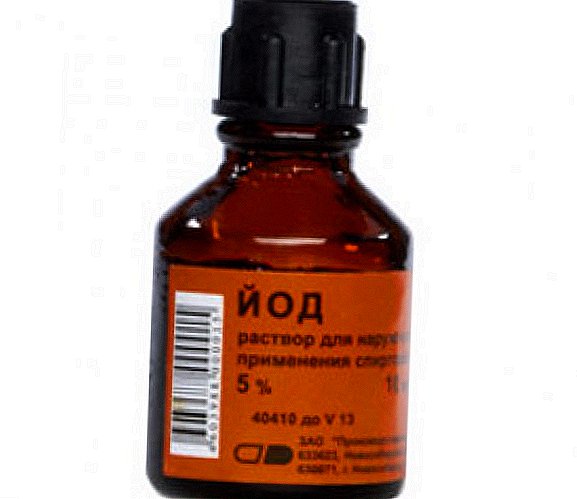 Iodine is a trace element that is found in every living organism and which everyone needs. The use of iodine is not limited to medical purposes, it can also be used as a feed for indoor plants and in the garden - for seedlings of tomatoes, cucumbers, cabbage and other vegetable and berry crops. This is what the article will be about.
Iodine is a trace element that is found in every living organism and which everyone needs. The use of iodine is not limited to medical purposes, it can also be used as a feed for indoor plants and in the garden - for seedlings of tomatoes, cucumbers, cabbage and other vegetable and berry crops. This is what the article will be about.
For indoor plants
This trace element contributes to the active growth and flowering of indoor crops, as well as improves their resistance to diseases and some pests, thanks to which iodine has become very popular among many gardeners.
Geranium
Geranium attracts lovers of indoor plants with abundant and beautiful flowering for a long time. However, this unpretentious indoor flower is not always pleasing to the eye with bright colors. In this case, a simple bottle of pharmacy iodine will help out, which will work a miracle with your plant. It will not only ensure the rapid growth of geraniums, but will also speed up the time of budding, prolong flowering and make the petals themselves more saturated. As a rule, fertilizing with iodine for flowering of geranium is carried out in the form of a solution that even a beginning plant grower can prepare.  To obtain iodine "mixture" you need to dissolve in a liter of well-settled or rain water just a drop of this trace element. But if you have a stunted flower, then the number of drops can be increased to three, in order to even heal the plant.
To obtain iodine "mixture" you need to dissolve in a liter of well-settled or rain water just a drop of this trace element. But if you have a stunted flower, then the number of drops can be increased to three, in order to even heal the plant.
Do not water the geranium at once with the entire amount of the solution - it is enough to add up to 50 ml of iodine water, and even closer to the walls. It is desirable that before this procedure, the soil itself was slightly moistened in order to protect the roots from burns.
This dressing can be made from the spring, until the rest period, which begins in the fall. However, do not get carried away with frequent watering with iodine - take breaks of up to three weeks in order not to harm the indoor flower.
Observing these simple rules, in the near future you will see on your window sill or on the balcony a chic plant dotted with bright buds.
Important! An excess of iodine when feeding indoor plants can lead to violent growth of domestic plants, as well as to the appearance of yellow color of leaves and buds.
Violet
Violet, popular among florists, also needs close attention of its owners. To ensure continuous flowering without damaging the appearance, it is advised to feed the plant not only with complex fertilizers, but also use iodine separately. For this purpose, a pharmaceutical preparation is perfectly suitable, the concentration of which, however, should be reduced. To create a weak solution, stir a drop of iodine in three liters of soft water. It is advised to apply such fertilizer only a few times (maximum four) with an interval of ten days. The next stage of feeding is carried out after transplanting violets, and even then not earlier than in three months.  When using top dressing with iodine, be careful not to fill it with a plant, since an excess of iodine in the soil can affect leaf color and decorativeness of flowers.
When using top dressing with iodine, be careful not to fill it with a plant, since an excess of iodine in the soil can affect leaf color and decorativeness of flowers.
In general, the capricious violet reacts positively to iodine, it is only necessary to monitor its dosage and frequency of application.
For vegetable crops
During the cultivation of seedlings of many vegetable crops fertilizing with the addition of iodine contribute to higher yields. But in order for you to get a rich harvest, not burnt plants, you need to follow some rules.
Cabbage
For cabbage iodine is used as a means of preventing various diseases. As a rule, it is used as a root fertilizer, but spraying is recommended in some forums. The desired solution is prepared very easily: about 10 droplets are used per 10 liters of water. Directly feeding cabbage is carried out during the formation of heads, 1 l of fertilizer for one plant.
Learn more about cabbage representatives such as: kohlrabi, broccoli, white cabbage, Beijing, savoy, red cabbage, cauliflower and kale cabbage.
Cucumbers
This culture is often exposed to powdery mildew. And in order to get rid of this dangerous disease for the plant and prevent its occurrence, seedlings of cucumbers and the soil around them are treated with a special solution. You can cook it without any effort: you need to mix 3 liters of water, about 0.4 liters of milk and 3-5 drops of iodine. Treatment with this medicine should be carried out once at the root. After a week or one and a half cucumbers must be sprayed - to do this, use a mixture prepared as follows: 10 liters of water, one liter of milk and 10 drops of iodine. Spraying should be repeated every week and a half. This tool can be used not only as a remedy for powdery mildew and other diseases, but it also contributes to the growth of the weaving part of cucumbers.
Did you know? From one ton of algae you can get 2.5 g of pure iodine.
Tomatoes
Experienced vegetable growers are very familiar with a disease such as late blight and how dangerous it is for tomatoes. In order to prevent the occurrence of this or fungal disease, or to slow down the pace of its development, most use, as a rule, copper sulphate. However, this substance is very toxic and dangerous for humans, so lately people have begun to use an alternative to blue vitriol - this is foliar feeding with iodine solution.  There are several options for how to feed the tomatoes with iodine. The first option is used before the ovary, and the second after, but before the fruits begin to form.
There are several options for how to feed the tomatoes with iodine. The first option is used before the ovary, and the second after, but before the fruits begin to form.
First recipe: in one liter of water, add two drops. In greenhouses, spraying this solution is carried out once every two weeks. If the bushes are in open ground, then once a week and a half. Before the appearance of the fruit, it is possible to carry out root dressing in the proportions of 5 drops together with spraying. on a bucket of water.
The second recipe: in a bucket of water you need to add about 20 drops. substances and one liter of normal whey. To improve resistance to bacteria, it is recommended to add one spoon of hydrogen peroxide. Spraying should be carried out every 10 days. Also, this solution can accelerate the ripening of fruits.
Pepper
Vegetable growers use iodine also when growing peppers. Processing can be done before landing. To do this, take a 0.1% solution and put the seeds in it somewhere for 6 hours. After this initial treatment, the seeds germinate faster, and the shoots themselves look stronger and healthier. After the appearance of two true leaves, the roots of seedlings are preferably treated with 5% iodine tincture per one drop per three liters of water.  It will not be superfluous to fertilize the pepper after its landing in open ground. To do this, dissolve 3 drops in 10-12 liters of water and pour out about a liter per shrub under the roots of the seedlings. This dressing of pepper contributes to the rapid formation of ovaries and a positive effect on the formation of the fetus itself. The fed plant becomes more resistant to various diseases, the ripening of sweet pepper is accelerated, and its quality is much higher than that of non-fed plants.
It will not be superfluous to fertilize the pepper after its landing in open ground. To do this, dissolve 3 drops in 10-12 liters of water and pour out about a liter per shrub under the roots of the seedlings. This dressing of pepper contributes to the rapid formation of ovaries and a positive effect on the formation of the fetus itself. The fed plant becomes more resistant to various diseases, the ripening of sweet pepper is accelerated, and its quality is much higher than that of non-fed plants.
Do not forget to use the solution in order to prevent late blight disease, especially if all the prerequisites are available. In a 10-liter bucket, stir 15 ml of the pharmacy drug and spray the peppers only a few times at 10-day intervals. 
Important! Sprayed peppers in the open field only in cloudy weather.
For berry crops
Regarding berry crops, it can be said that this trace element is a good firming and prophylactic agent against gray rot and other fungi. His additive speeds up flowering and ripening time of the berries, improves taste, increases the size of the fruit.
This common berry, like strawberries, is fertilized with iodine in the spring to improve the growing season and the quality of the fruit. The substance is also used as a prophylactic agent for weevils and fungal diseases. Before flowering, the bushes should be sprayed with a solution based on a bucket of 8 or 10 drops of water. It is also believed that this element can provoke a second flowering and the appearance of fruits. For this you need to make root dressing solution of 20 drops in a bucket of water.  Grapes - no less popular berry, than strawberries, and also needs additional care. Therefore, for the prevention and treatment of fungal diseases, the grapes are sprayed with iodine solution: a liter of milk and about 20 drops of iodine should be added to 10 liters of water. Spraying should be carried out every week and a half.
Grapes - no less popular berry, than strawberries, and also needs additional care. Therefore, for the prevention and treatment of fungal diseases, the grapes are sprayed with iodine solution: a liter of milk and about 20 drops of iodine should be added to 10 liters of water. Spraying should be carried out every week and a half.
It is also interesting to read about such grape varieties as "Talisman", "Sofia", "Cardinal", "Original", "Novocherkassk Anniversary", "Vostorg", "Jupiter", "Rizamat", "Krasotka", "Alyoshenkin".

Did you know? Iodine is a very toxic trace element: 3 g of a pure substance can cause heart and kidney damage in humans, as well as be fatal.
In conclusion, I would like to emphasize that this element is very important for all vegetable and berry crops, but it must be used responsibly, otherwise you will only harm the plants.



